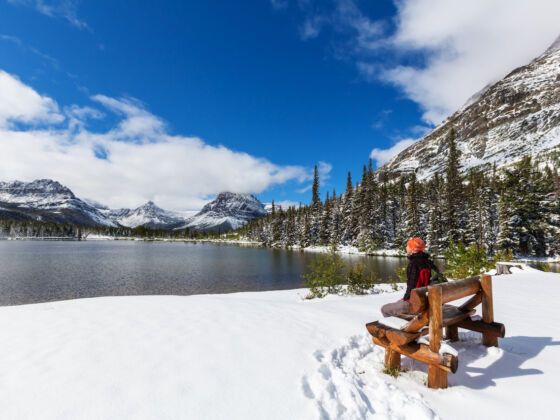Alone in the Cathedral
While the summer months buzz with excited hikers, the first snows of winter bring a calmness to Glacier National Park perfect for those looking to strap on snowshoes or cross-country skis.
Hearing nothing but the crunch of our shoes, my boyfriend Andy and I took off for a couple days into Glacier’s backcountry. We decided to make the 16+ mile round trip to Avalanche Lake and its snow-crusted mountains and icy waters.
